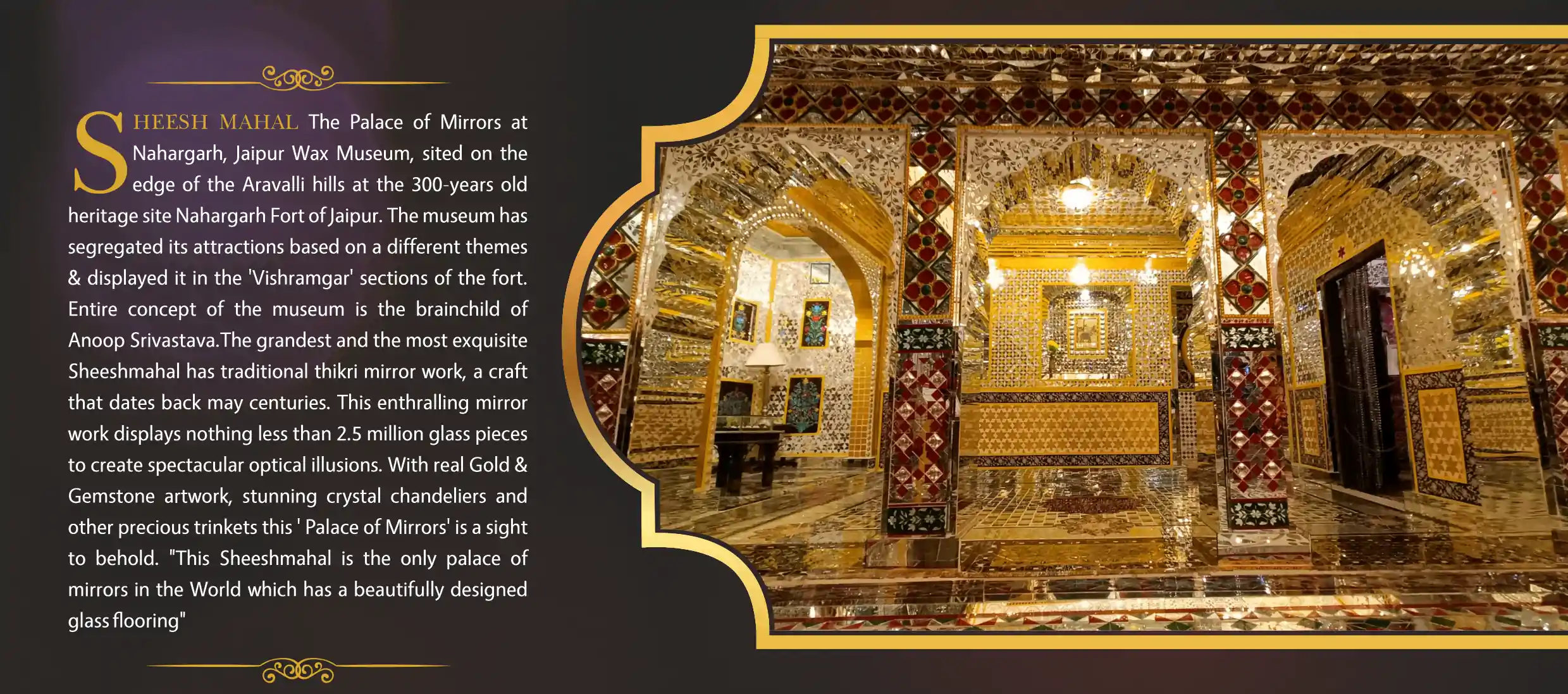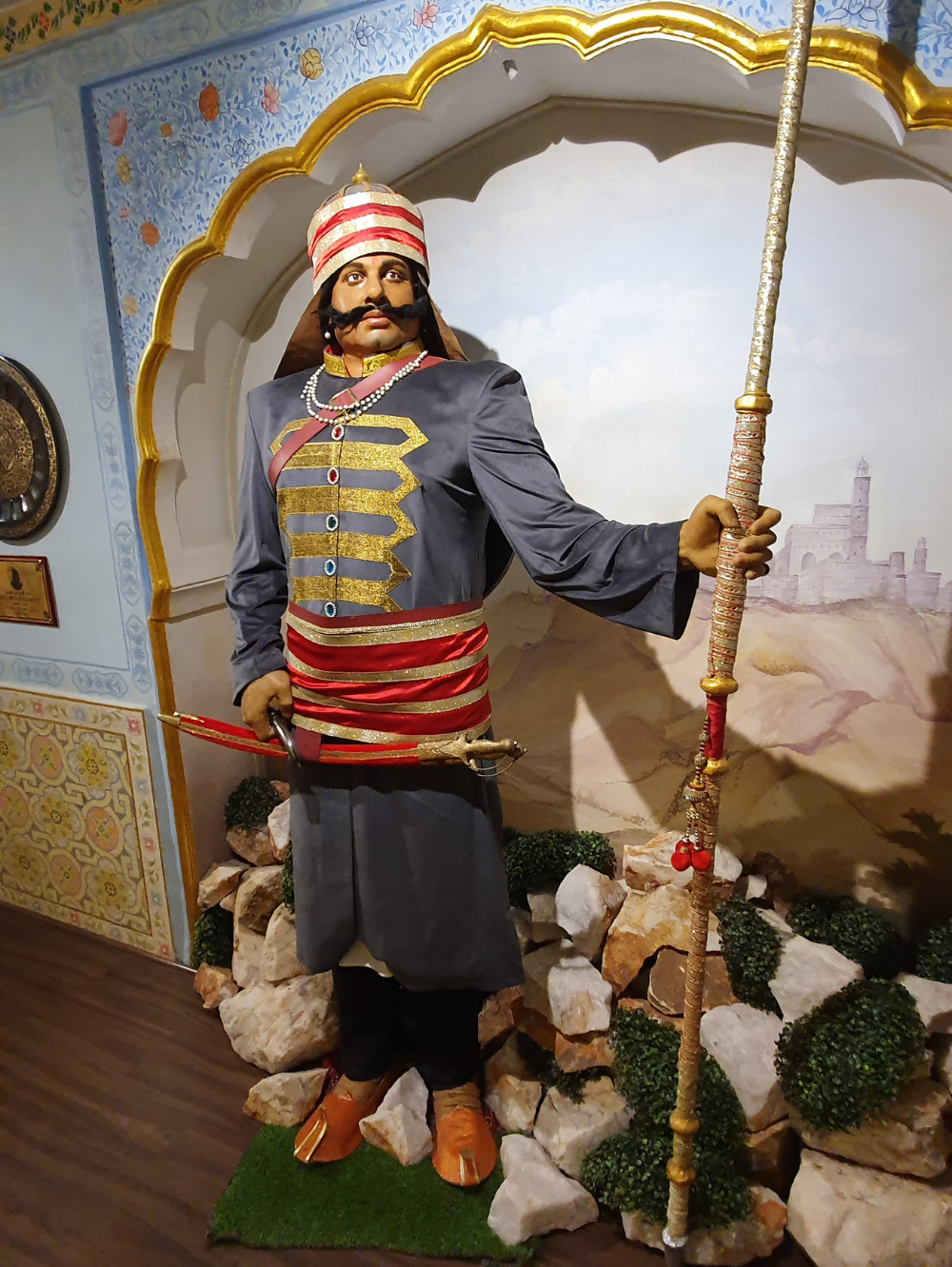



Sheesh Mahal
The Royal Darbar
An exclusive area has redesigned to resemble a charming Royal courtroom from the 18th century. Right from the entrance till the end, it is decorated with the enchanted painting that depict the rich heritage of Rajputana Dynasty. This grand courtroom holds handmade paintings with pure Gold and motifs and lifesize wax figures of the eminent Jaipur rulers.
- Sawai Jai Singh II
- Sawai Ram Singh II
- Sawai Madho Singh II
- Queen Gayatri Devi (Young)
- Rajmata Gayatri Devi (Old)
- Sawai Mann Singh II
- Maharana Pratap
- Queen Hadi Rani
Dear Guests,
It gives me immense pleasure to welcome you to Sheesh Mahal, As you explore this architectural marvel, I hope you are captivated by the enchanting play of light and reflections that create an illusion of infinite beauty. Sheesh Mahal is more than just a monument, it is a celebration of craftsmanship and artistry that has stood the test of time.
Thank you for visiting and experiencing the splendor of Sheesh Mahal. May your visit be filled with wonder and inspiration.
Director,
Anoop Srivastav

At the Exquisite Royal Palace

Sawai Jai Singh II
Sawai Jai Singh II (3 November 1688 – 21 September 1743), was the 29th Kachwaha Rajput ruler of the Kingdom of Amber, who later founded the fortified city of Jaipur and made it his capital. He became the ruler of Amber at the age of 11, after the death of his father, Mirza Raja Bishan Singh, on 31 December 1699.

Sawai Ram Singh II
Sawai Ram Singh II (28 September 1833 – 17 September 1880) was the Maharaja of Jaipur from 1835 until 1880, succeeding after the death of Jai Singh III. He became the ruler of Jaipur at the age of 16 months after his father's death. During his reign, he implemented various reforms, influenced by Western ideals and British preferences.

Sawai Madho Singh II
Sawai Madho Singh II (28 August 1862 – 7 September 1922) was born Kunwar Kaim Singh Rajawat, the second son of the Thakur Raghunath Singhji of Isarda, a petty chieftain related to the ruling Kachwaha house of Jaipur . After the death of their father, a dispute with his elder brother over the succession left the teenaged Kaim exiled and living in poverty.
